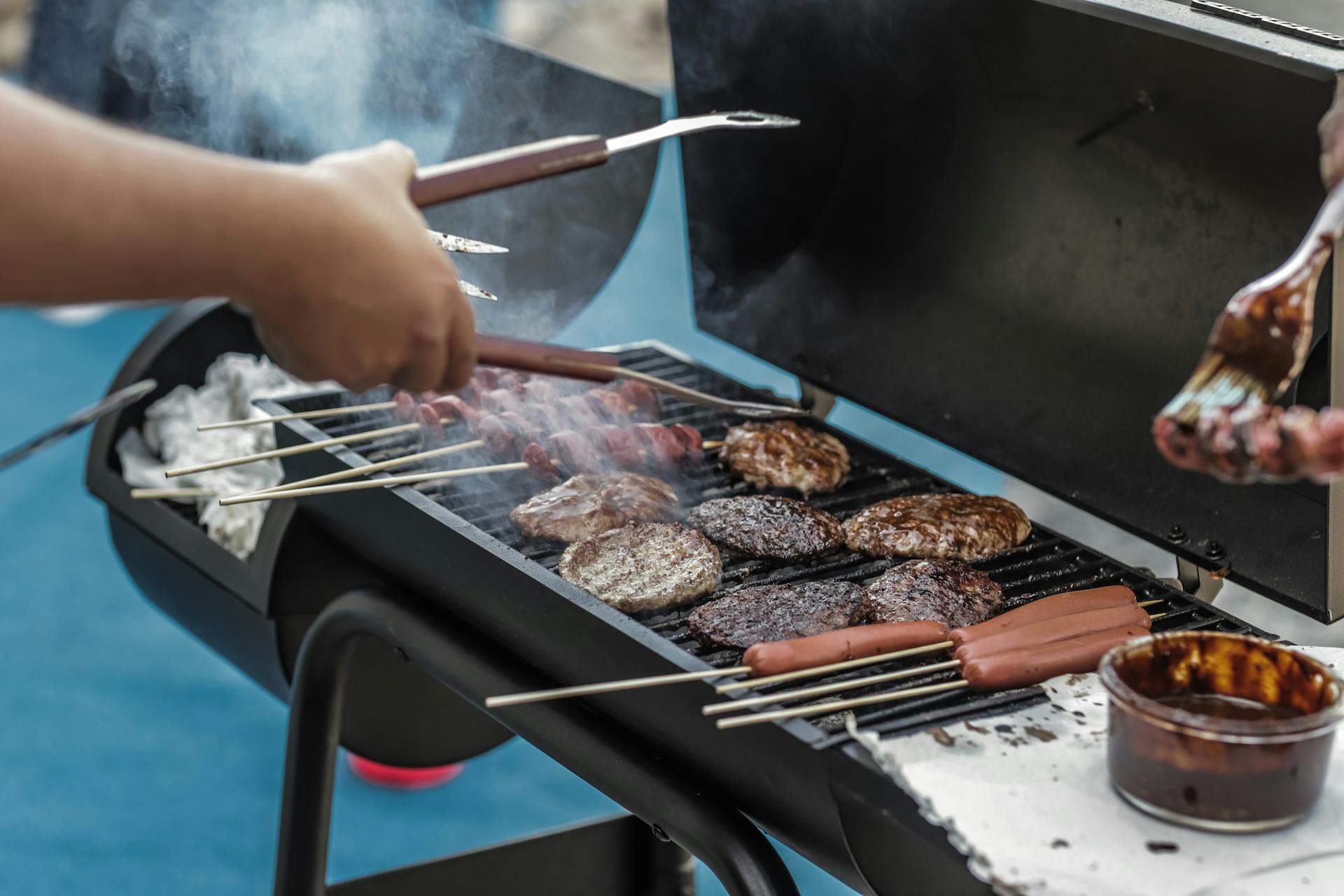
Smoking is one of the most revered techniques in the BBQ world. Whether you’re a seasoned pitmaster or just starting your journey, mastering the art of smoking can elevate your BBQ skills to a whole new level. Smoking requires patience, precision, and a deep understanding of how heat and smoke interact with your meat. In this guide, we’ll explore the essential techniques for achieving the perfect smoked BBQ, ensuring every bite is packed with flavor.
1. Choosing the Right Wood
The type of wood you use plays a crucial role in the flavor profile of your smoked meat. Different woods impart different flavors, so it’s important to choose wisely based on what you’re smoking:
- Hickory: Strong, bacon-like flavor. Ideal for pork, especially ribs and shoulders.
- Oak: Mild and versatile. Works well with beef, pork, and poultry.
- Mesquite: Bold and intense. Best for red meats, but can overpower lighter meats.
- Apple or Cherry: Sweet and fruity. Perfect for poultry, pork, and even fish.
- Pecan: Similar to hickory but milder. Great for poultry and pork.
Pro Tip: Use chunks or chips of wood and soak them in water for 30 minutes before adding them to your smoker. This helps control the burning rate and ensures a steady release of flavorful smoke.
2. Temperature Control is Key
One of the most important aspects of smoking is maintaining a consistent temperature. Most smoking is done at a low temperature, between 225°F and 250°F (107°C to 121°C), allowing the meat to cook slowly while absorbing the smoky flavor.
- Invest in a good smoker: Whether it’s a charcoal smoker, electric, or pellet smoker, make sure you understand how to control its temperature.
- Use a meat thermometer: Internal temperature matters more than the cooking time. For example, pork shoulders should reach an internal temperature of 195°F (90°C) for perfectly tender results.
- Don’t rush it: Smoking is a slow process that can take anywhere from a few hours to an entire day, depending on the type of meat. Be patient for the best results.
3. Mastering the Meat Prep
Before smoking, how you prepare your meat can make a significant difference in the outcome. Here’s a breakdown of essential prep steps:
- Trim the fat: While some fat adds flavor, too much can prevent smoke from penetrating the meat. Trim excess fat but leave enough for a rich, juicy texture.
- Dry rubs and marinades: Dry rubs are essential for creating a flavorful crust or “bark” on your smoked meats. Common ingredients include salt, pepper, paprika, garlic powder, and brown sugar. Marinades can also add depth to your BBQ, especially for poultry and pork.
- Let it rest: After applying your rub or marinade, allow the meat to rest in the refrigerator for at least an hour, or overnight for stronger flavors.
4. Controlling the Smoke
When smoking meat, remember that less is more when it comes to smoke. Too much smoke can result in a bitter taste, while just the right amount will give you that perfect smoky flavor.
- Blue smoke is good smoke: You’re aiming for a thin, blue smoke rather than thick, white clouds. Thick smoke can overpower the meat and leave an unpleasant aftertaste.
- Ventilation matters: Make sure your smoker has proper airflow. The vents on your smoker (usually called dampers) help control the smoke flow and temperature. Keeping them partially open allows just enough smoke to infuse the meat without overwhelming it.
5. Low and Slow
Smoking meat is all about cooking at a low temperature for a long time. This method breaks down the connective tissues in tougher cuts of meat, resulting in that melt-in-your-mouth tenderness BBQ is famous for. Popular cuts for smoking include:
- Brisket: One of the most famous smoked meats, requiring 10-14 hours of low and slow cooking.
- Pork shoulder: Perfect for pulled pork, it typically smokes for 6-10 hours.
- Ribs: Pork ribs smoke for 5-6 hours at a lower temperature.
Pro Tip: Follow the “3-2-1 method” for ribs. Smoke the ribs uncovered for 3 hours, wrap them in foil for 2 hours (to lock in moisture), and unwrap them for the final hour to develop the crust.
6. Let the Meat Rest
Once your meat reaches the desired internal temperature, resist the urge to slice into it immediately. Letting the meat rest for 15-30 minutes allows the juices to redistribute, resulting in a more flavorful and tender BBQ.
- Wrap the meat in foil: This helps retain heat and moisture while it rests.
- Patience pays off: Let the meat rest in a warm place before serving to maximize flavor.
7. Bonus: Experiment with Sauces
While some purists believe BBQ sauce has no place in smoked meats, others enjoy the added layer of flavor. Classic BBQ sauces range from tangy vinegar-based sauces to sweet molasses-rich sauces. If you choose to use a sauce, brush it on during the last 30 minutes of smoking to avoid burning the sugars.
Mastering the art of smoking takes time, practice, and a little experimentation, but the reward is worth it. By controlling the smoke, temperature, and meat preparation, you’ll be on your way to creating BBQ that impresses friends and family at your next cookout. Happy smoking!




